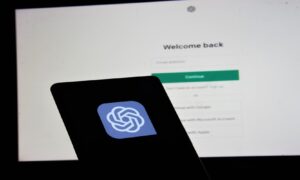Nowadays, people rely more on technology and internet solutions to entertain and educate their children. Children are so attached to digital devices that it is difficult to stop them from using them. The Internet may have some benefits, but it is likely dangerous for children, as you never know who is tracking their movements and collecting information about them.
As a parent, it is your job to protect your children’s privacy on the Internet because keeping children safe is always better than cure. Children and teens spend increasing amounts of time on the Internet and digital devices for various purposes. You should take steps to protect your children’s privacy on the Internet.
Talk to your child in detail about internet privacy.
Teach your child online privacy and speak to them about managing their online reputation. Some websites and applications ask users to provide information about themselves, be it photos, interests, or relationship status. Sharing your information on the Internet can be tempting, but it’s also important to talk to children about Internet data and privacy.
Have a detailed discussion with your child about the risks of sharing their data on the Internet. Explain how their information is being collected and how it may be used for different purposes. Once you inform them of this, they will be cautious when sharing their information online.
Don’t share your child’s details with any apps.
Whenever we download any application on our mobile, it probably asks for access to the files and data stored on the phone, including photos, files, documents, contacts, etc. Therefore, it is better not to share your child’s details with any application. Sometimes, you don’t know who can use these photos and videos when you give them access. Only provide access to what you need. Otherwise, don’t share your data with applications.
Turn on parental controls.
You can enable the parental control option from the settings of your WiFi router, i.e., through 10.0.0.1, Parental Control can help you filter websites, block access to websites, limit Internet time, and block WiFi. With Parent Controls, you can schedule the Internet to turn off and on at a particular time every day to turn the Internet off during a specific time, such as during study time every day. You can also schedule Internet access for specific devices, such as your child’s laptop or tablet, so it is automatically disconnected at a particular time.
In addition to internet dates, you can block specific websites from being accessible on the network. You need to enter the URLs of the websites you want to stop so you cannot let your child use those websites. Some routers also have a feature that lets you pause WiFi during specific times, such as dinner time. These parental control features are available in most WiFi routers, including those with third-party firmware like the 10.0.1
Use strict privacy settings while the child is using the Internet.
Whatever apps or websites your child uses, ensure you set strict privacy settings on them. Once an application is downloaded or an account is created on a social website, make sure you have established strict privacy settings. Quickly go into privacy settings and see who can see your posts, who can contact you, and whose posts you can see. You will be protecting your child’s privacy by setting strict privacy settings. Turn off location services and GPS for apps and websites your child uses. If you’re always with your child, turning off location services is a great way to protect your child’s privacy.
Constantly monitor your child’s internet usage.
As a parent, you should regularly observe what your child does online. Keep a regular eye on your child to know which websites he uses on the Internet and how he uses them. Not only will this help keep your child mindful of their data, but it will also give you peace of mind that your child is using the Internet responsibly.

















































